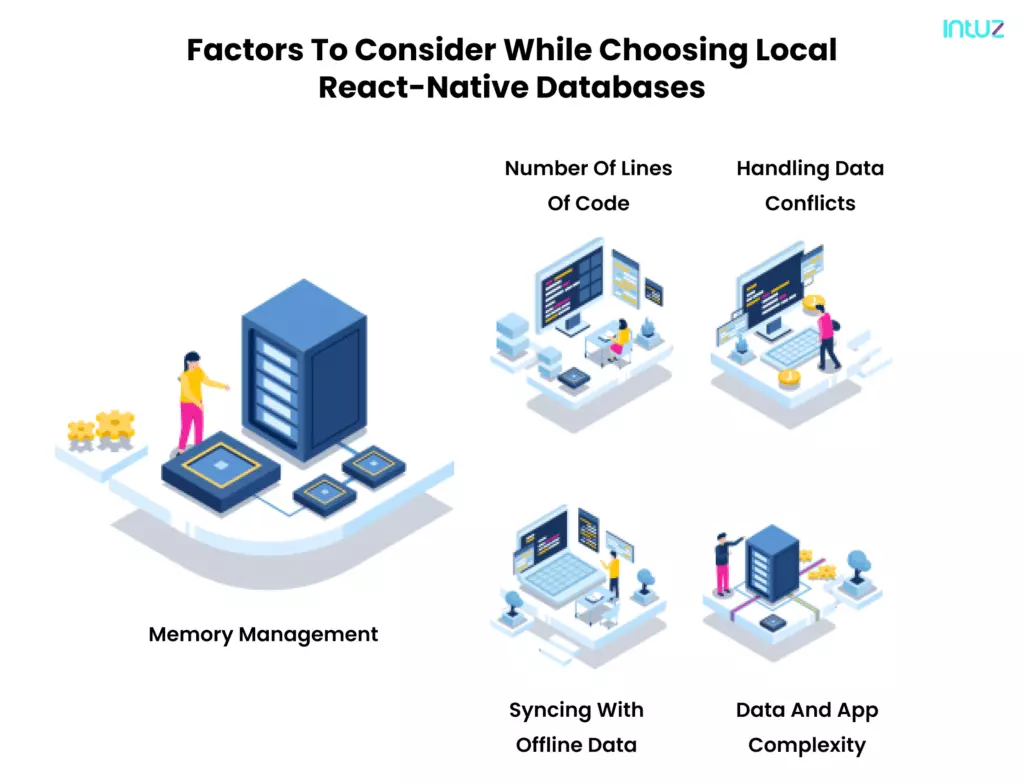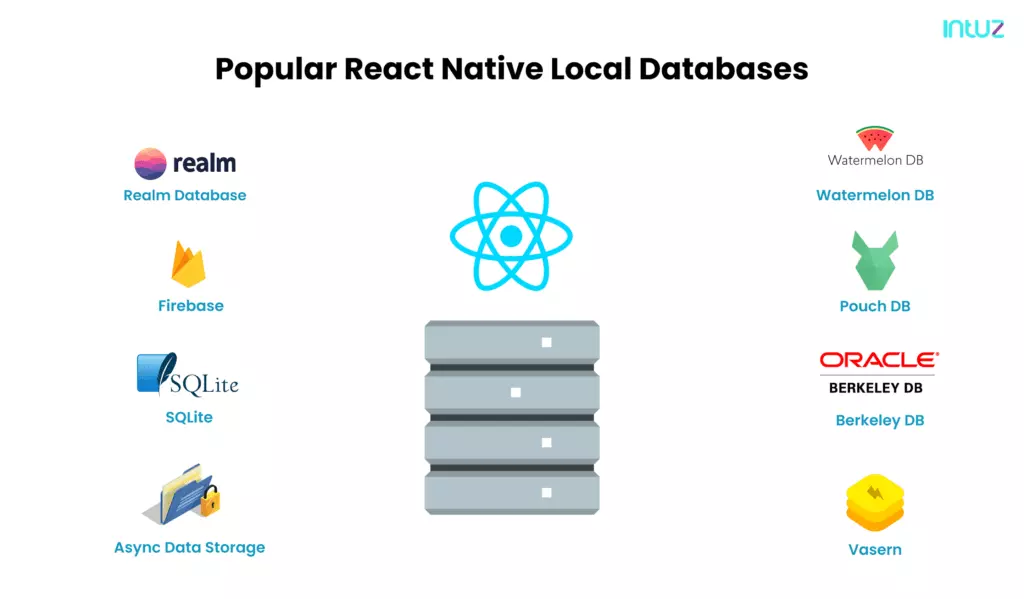➤ How to Code a Game
➤ Array Programs in Java
➤ Java Inline Thread Creation
➤ Java Custom Exception
➤ Hibernate vs JDBC
➤ Object Relational Mapping
➤ Check Oracle DB Size
➤ Check Oracle DB Version
➤ Generation of Computers
➤ XML Pros & Cons
➤ Git Analytics & Its Uses
➤ Top Skills for Cloud Professional
➤ How to Hire Best Candidates
➤ Scrum Master Roles & Work
➤ CyberSecurity in Python
➤ Protect from Cyber-Attack
➤ Solve App Development Challenges
➤ Top Chrome Extensions for Twitch Users
➤ Mistakes That Can Ruin Your Test Metric Program
Best React Native Local Databases For App Development | At the cost of one, cross-platform application development allows businesses to develop and roll out apps across mobile operating systems and devices. Ideal for brands with limited app development budgets and time to market, cross-platform applications are nothing less than a blessing for small and medium-sized businesses trying to disrupt the market with their ideas.
As far as cross-platform apps are concerned, one name that immediately resonates with mobile app developers and tech enthusiasts across the world is React Native. With its features and offerings, React Native app development allows ventures to roll out high-performing apps that are scalable, flexible, and deliver an ultimate native-like experience to users. Statistics also reveal that close to 42% of the developers worldwide preferred React Native for their projects from 2019 to 2021.
Despite being extremely functional, React Native developers face a particular challenge with respect to selecting the right tech stack for their projects. This is specifically predominant when selecting a React Native database for their app development process.
With developers burdened with the responsibility of developing the most stable versions of apps, it all boils down to the tech stack they choose and the way they leverage their components’ potential.
If you’re someone facing similar issues and wondering which React Native database you should go for, here’s an extensive guide on react native for mobile app development with special attention to the databases. So, let’s get started but before that, let’s cover some basics as well.
Factors To Consider While Choosing Local React Native Databases
There are tons of factors to consider while selecting a local React Native database. Here, we have handpicked a few crucial ones. Let’s check them out.

Memory Management
By default, most of the server and client-side scripting languages out there work on key-value storage. Values and keys have to be maintained in a sequence of strings either by making use of a library or manually by a developer. However, this sequencing can stall an app’s performance when it has to work on limited resources and process complex datasets. So, you need to select a database that will allow you to store more volumes of complex data compared to key-value pairs.
Number Of Lines Of Code
Avoid using advanced databases for your application because they can make the coding process complicated, increase development expenses, slow down your app and stall your database’s performance as well. Never look for an advanced database if your code exceeds over 20 lines.
Data And App Complexity
If the datasets involved in your app are too complex, your app performance would definitely take a hit. That’s why databases that can handle complex data should be chosen. For instance, if you have an app that requires multiple users simultaneously working on the app at the same time (something like Trello), only complex databases can seamlessly get the job done. At the same time, you can prefer simpler databases if your requirements are not too complicated or daunting.
Handling Data Conflicts
If your app has more collaborative features integrated into it, the more it is bound to give rise to data conflicts. So, always pick databases that offer precise documentation and conflict-resolution or handling policies on their websites or resources pages. Focus on trade-offs in data collaboration and assess its impact on your app’s performance.
Syncing With Offline Data
If your app is simple and does not involve multiple stakeholders working simultaneously, ideally go for simple databases. This will allow your app to sync seamlessly whenever an internet connection is established successfully. On the other hand, complex apps with multi-user functionalities demand complex databases.
Top 7 React Native Local Databases For App Development
Like we saw, selecting a local database depends on the vision and scope of your app idea, your market segment, number of users, collaborative features, and more. Based on your requirements, you can use any of the following local databases for your projects. These are personally tried and tested by us in our journey.

Realm
Realm was originally designed and released for smartphone apps and wearable devices (real-time and offline apps). It offers astounding benefits for apps built on React Native as well. Built on ORM, the database does not rely on key-value strings but comes with its indigenous engine. Realm is increasingly preferred by developers to build solid enterprise apps that can handle and process massive volumes of data.
Pros Of Realm
- Implements diverse encryption standards for distinct mobile platforms.
- Realm Sync perpetually runs at the backend, recording requests and actions and storing them locally.
- Offline-first architecture can be easily implemented by developers through Redux Offline
Pricing:- Realm is completely open-source as a database in React Native. However, a pro version is priced, and then there is a price of around $1750 per month that you need to pay if you intend to develop your app on the platform.
Firebase
Firebase is compatible with real-time NoSQL databases to develop React Native apps. Thanks to its data sync and offline data exchange features, it is highly preferred by developers around the world. Firebase also takes care of fulfilling the Model and Controller requirements of the MVC architecture.
Pros of Firebase
- It ensures real-time syncing of data across users and platforms.
- It offers an API (cross-platform) that hardly requires any setup. Besides, no application servers are required to access data as any mobile device can access its real-time database.
- Firebase is the most ideal to develop real-time apps with offline persistence. This allows developers to generate timestamps for internet disconnections and marking users online or offline.
Pricing:- It is free as long as you make use of the 1GB storage space that comes with it. It is priced at around $25 for 2.5GB storage and the plans increase on a pay-as-you-use model.
SQLite
SQLite is designed to serve as local storage for smartphone apps. The SQLite, like the name suggests, is a lightweight library that does not require any complex setups or maintenance efforts. This can be integrated with mobile apps that you develop for direct access to databases.
Pros of SQLite
- It is ACID-compliant, implementing most SQL standards with a few omissions.
- SQLite is a file-based library with tools that can process and handle diverse data types without any concerns.
Pricing:- It is open-source. However, you can pay a one-time price of $6000 to obtain a license for copyright infringements.
WatermelonDB
One of the standout features of WatermelonDB is its scalability. Developed on SQLite, developers can scale to thousands from hundreds of records without compromising on speed. WatermelonDB is ideal for building large-scale enterprise edition apps.
Pros of WatermelonDB
- Developers can implement the offline-first architecture.
- Enables static typing with the help of Flow.
- Leverages the potential of SQLite.
Async Storage
With local data storage and data persist features, Async Storage is a local database that comes preloaded with React Native. Async storage is perfect for instances when the app needs to store data for use even after a user has closed the application or the device.
Pricing:- It comes with React Native.
PouchDB
Based on JavaScript, PouchDB open-source database allows you to store your data in JSON format. The full potential of React Native can be leveraged by developers by using one single JavaScript API to develop, read, update, query, and delete queries. Besides, PouchDB is highly compatible with MySQL, MongoDB, CouchDB, and more.
Pros of PouchDB
- Being inside the browser, developers need not run queries over a network. Queries get executed more swiftly this way.
- Data syncing can happen with any compatible server, allowing apps to function both offline and online.
Pricing:- It is open-source.
BerkeleyDB
BerkeleyDB is another powerful React Native database that offers multiple ways to handle data. In simple words, it can handle your data either through key-value strings or in a more relational style like how an SQLite database would do.
Pros of BerkeleyDB
- Enables concurrency of access across users.
- Very simple to use.
- Compatible with industry-grade transactions.
Pricing:- It is open-source.
Vasern
It is lightweight and ultra-fast, enabling data storage not just locally but on the cloud as well. The modules and architectures in Vasern are inspired by various databases, packaging some of the best features into one database.
Pros of Vasern
- Open-source and swift.
- Makes applications consistent and high-performing.
- It is developer-friendly.
Pricing:- It is open-source.
Wrapping Up
So, these were the top 7 React Native databases. Now you know your purpose with the app you are about to develop, its requirements, pros, and features of these databases. Select the right one and make way for stable cross-platform apps in the market. Good luck!
I do believe all the ideas you have offered for your post. They are really convincing and can definitely work. Nonetheless, the posts are very short for novices. May just you please prolong them a bit from subsequent time? Thank you for the post.